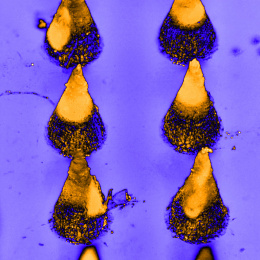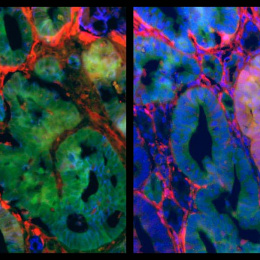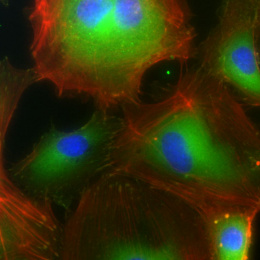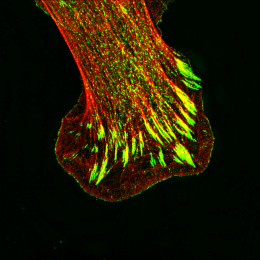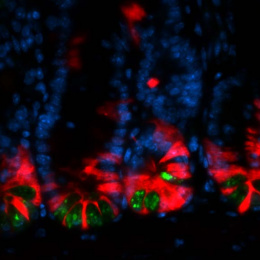Filopodia-like Extensions from an Airway Epithelial Cell
Filopodia-like Extensions from an Airway Epithelial Cell
Submitted by Brett Zani of the Edelman Lab in the Harvard-MIT Division of Health Sciences and Technology
Harvard-MIT Division of Health Sciences and Technology, Koch Institute at MIT, Institute of Medical Engineering and Science
Brett Zani
Edelman Lab, Harvard-MIT Division of Health Sciences and Technology
Epi-Fluorescence Micrograph
"Our research goals focus on elucidating how cellular extensions mediate cell communication and migration. Cellular protrusions are associated with various physiological processes including embryogenesis, tumorigenesis, and the immune response. Here, staining of the actin cytoskeleton (red), tubulin cytoskeleton (green), and nuclei (blue) show filopodia-like extensions protruding out from a mass of primary human airway epithelial cells. Typical filopodia are F-actin-based cell extensions involved in sensory and exploratory functions of the cellular environment and participate in wound healing, invasion, chemotaxis, and cell-to-cell signaling. Unlike typical filopodia, the filopodia- like extensions imaged here are composed of both actin and tubulin."

